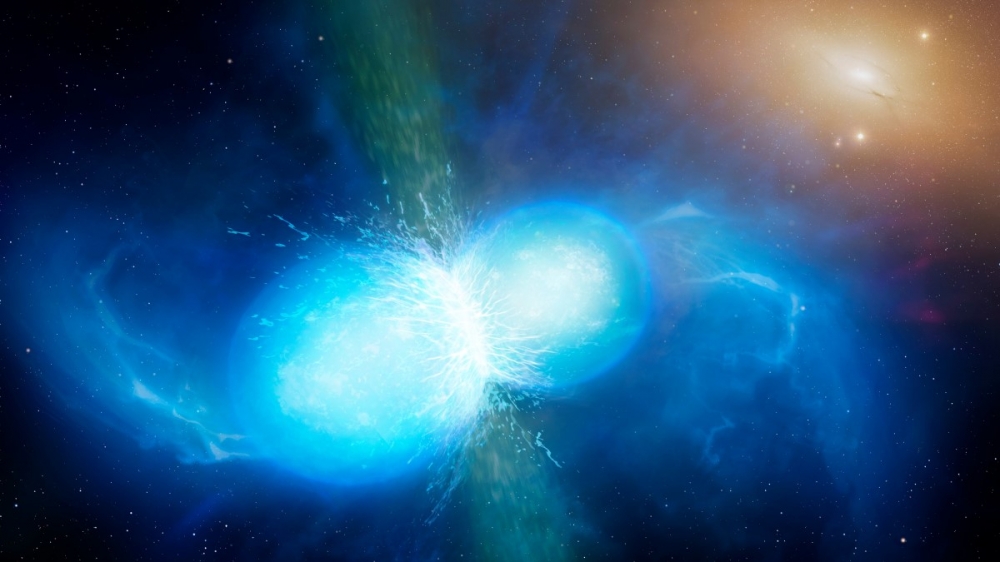Ultrastrong magnetic fields could prevent neutron stars from forming black holes

Biggish bang Artist's impression of neutron stars merging, producing gravitational waves and resulting in a kilonova explosion. (Courtesy: University of Warwick/Mark Garlick/CC BY 4.0)
05 Apr 2022
A massive and exotic type of neutron star could be formed by the merger of two neutron stars and avoid becoming a black hole – at least temporarily. That is the conclusion of Arthur Suvorov at Manly Astrophysics in Australia and Kostas Glampedakis at Germany’s University of Tübingen who have calculated that magnetically supramassive neutron stars could stave off gravitational collapse, despite lying above the theoretical mass limit for black hole formation.
In 2017 the LIGO–Virgo collaboration detected the first gravitational waves emanating from two neutron stars as they spiralled into each other, and eventually merged. This event provided important opportunities for astronomers to study the aftermath of the merger using a range of different telescopes, but key questions remain about the object that was created.
See full text
Direct link to the article